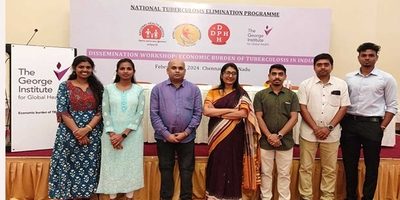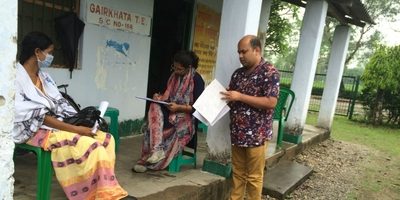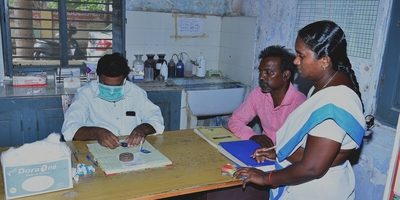
New study reveals alarming economic burden of Tuberculosis treatment in India
- A collaborative survey conducted by The George Institute for Global Health and various worldwide institutions highlighted the severe financial strain TB patients face in India.
- A survey of 1,482 TB patients across four states revealed shockingly high rates of catastrophic costs, with 30% to 61% experiencing financial hardship exceeding 20% of pre-TB annual household income mainly due to delays in diagnosis and income loss because of unemployment during long TB treatment.
- Urgent actions recommended include intensifying private sector engagement, improving rapid diagnosis, implementing community awareness campaigns, expanding health insurance coverage for pre-treatment expenses, and safeguarding TB patients from income loss.
Researchers from The George Institute for Global Health India in collaboration with researchers from Indira Gandhi Government Medical College (Nagpur), and the London School of Hygiene and Tropical Medicine (UK) have conducted a survey shedding light on the staggering financial burden faced by Tuberculosis (TB) patients in India.
Their findings underscore the urgent need for both policy and public interventions to alleviate this burden on patients and the nation. The study was led by Dr. Susmita Chatterjee along with Palash Das, Gayatri Bhambure, Radha Munje, and Anna Vassall.
The study conducted against the backdrop of the World Health Organization's End TB strategy, which serves as a blueprint for countries to achieve zero catastrophic costs for TB-affected households, reveals concerning statistics about the economic toll of the disease in India. With the nation bearing the highest TB burden globally, the reported incidence reached 2.42 million cases in 2022.
The George Institute researchers followed a cohort of 1,482 drug-susceptible TB patients across four states in India: Assam, Maharashtra, Tamil Nadu, and West Bengal. Employing World Health Organization guidelines, the study calculated treatment costs, incorporating both direct (i.e. actual money spent) and indirect costs such as time, productivity, and income loss.
Speaking about the research, Dr. Susmita Chatterjee, The George Institute for Global Health India, said, “Following the largest cohort of drug-susceptible TB patients till date, our study concluded that a significant proportion of study participants faced catastrophic cost and the proportion was much higher when income loss because of TB treatment was considered in total cost calculation method. Therefore, ensuring uninterrupted livelihood during TB treatment is an absolute necessity.”
She also added, “Our study showed significant delay from symptom onset to diagnosis and our study participants spent more than half of total treatment cost even before starting the treatment. Further, during this period they also propagated the disease. Therefore, reducing the pre-diagnosis delay should be the policy priority.”
Shockingly, depending on the method of indirect cost calculation, between 30% to 61% of study participants faced catastrophic costs. Defined as out-of-pocket expenses exceeding 20% of pre-TB annual household income, catastrophic costs pose a significant threat to the financial stability of millions of TB-affected households in the country.
Of particular concern was the fact that for over half of the participants who faced catastrophic cost, costs became catastrophic even before commencing TB treatment due to delays in diagnosis. The average delay of 7-9 weeks from symptom onset to treatment initiation, twice the accepted delay period, resulted in substantial financial burdens from repeated consultations, tests, and travel expenses.
The study's implications are profound, calling for immediate action at both policy and community levels. Supply-side interventions such as intensifying private sector engagement and rapid diagnosis are crucial, alongside demand-side initiatives like community awareness campaigns. Addressing the delay in diagnosis through early case detection and active community engagement is paramount to reducing economic burdens.
The study also advocates for the reimbursement of pre-treatment expenses through health insurance, emphasising the need for improved coverage and utilization. Policies safeguarding TB patients from unemployment and income loss are also imperative to mitigate financial hardships associated with the disease.
The findings of this study serve as a clarion call for concerted efforts from policymakers, healthcare providers, and communities to alleviate the economic burden of TB treatment in India. By implementing comprehensive strategies, we can not only reduce financial hardships on patients but also move closer to achieving the ambitious targets set forth by the End TB strategy.
The results of this study have been published in PLOS Global Public Health and may be accessed at https://journals.plos.org/globalpublichealth/article?id=10.1371/journal.pgph.0003078








